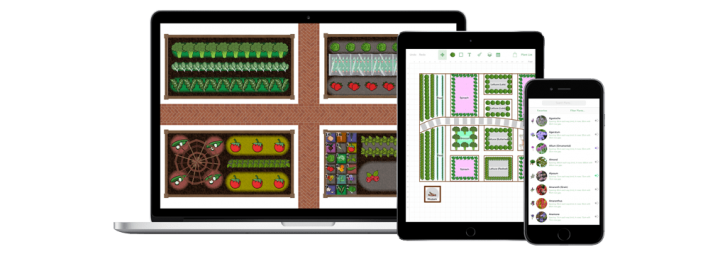How to make your garden nature-friendly
Discover eight simple steps to gardening in step with nature! Read on or watch our video to garden more sustainably—to do yourself and your planet a world of good.
1. Choose Human Power
Avoid using up natural resources by choosing human-powered alternatives to electric or gasoline-powered machines such as lawnmowers, tillers and leaf-blowers wherever possible. Break big jobs down into regular smaller blocks to make them more manageable. Gardening like this is a great way to stay active and keep fit too.
2. Work with Nature
Artificial fertilizers and pesticides can pollute rivers and harm beneficial insects and soil life, and they’re energy intensive to manufacture too. Instead, add organic matter to your soil regularly to build long-term fertility, and plant flowers to attract pest predators.
3. Plant Trees
Trees lock up carbon dioxide from the atmosphere, helping to limit the effects of our changing climate. They also offer birds somewhere to nest, feed and shelter. In return they will help to keep many plant pests under control.
There are trees of all sizes to suit every garden, and they can be planted into otherwise underused areas of the garden. Most are easy to grow and many are productive and beautiful too.
4. Compost: The Best Plant Food
Composting is a natural process and far more environmentally friendly than throwing away organic waste. It’s free and great for your soil; garden-made compost is often richer in valuable nutrients than bought-in sources of compost, so your plants will love it.
Setting up a simple compost pile or bin is easy – and don’t worry, it won’t smell!
5. Reconsider Your Lawn
Lawns need a lot of effort and watering to stay green, especially in hotter climates. Considering repurposing your lawn – for example, grow a native wildflower meadow instead. It only needs mowing once or twice a year, so it’s not only more attractive than a lawn and better for wildlife, it’s less work too.
Make any lawn that remains more sustainable by allowing the grass to grow a little longer between cuts. Leave the clippings where they fall at least once a month; they’ll return their nutrients to the soil, so you need to use less fertilizer to keep it looking good.
6. Reuse and Recycle
Reuse old seed containers and pots as often as possible. Wash them after each season so they’re ready and clean for the next. Prolong the life of your tools by storing them somewhere dry so they last longer, keeping moving parts oiled, and sharpening blades regularly.
Choose lower energy, natural materials in the garden. Use biodegradable pots made of coir (coconut fiber), cardboard or even old newspaper, or consider a greenhouse built from sustainable wood instead of aluminium.
Repurpose old items from your home into new ones for the garden – it’s great fun to get creative!
7. Free Resources, Naturally
Set up barrels to collect rainfall. It will cut your consumption of treated water – and your water bill! (Check that it’s allowed in your area first.)
Make leaf mold with fallen leaves. It’s perfect for improving the structure of your soil and creating your own, packaging-free potting mix.
Create more spaces for wildlife. Grow flowers rich in nectar to feed pollinators and draw in other insects to feed on the bugs you don’t want. Create a pond for frogs and toads if possible – they’ll reward you by controlling slugs.
Extra room for wildlife needn’t mean giving up valuable space on the ground. Consider installing a green roof on your shed, or build a simple bug hotel to hang up. Many projects are easily completed in a weekend to bring long-lasting benefits, and are great fun for adults and kids alike.
8. Grow What Thrives
Avoid heartache and hard work by growing plants that naturally thrive in your location. Pick the right plant for the right place: for example, grow vegetables such as tomatoes and beans in the sunniest areas in your garden, or leafy salads in the shade.
Don’t dive in too fast at the start of the growing season. Work back from the last frost date to avoid sowing tender crops such as squashes too early, and minimize the need for costly heating. Our Garden Planner includes a handy Plant List to help you find your ideal planting times for your location.
Growing any fruits, vegetables or herbs is a big step towards a more Earth-friendly lifestyle, so grow as much as you can: plan ahead, re-sow throughout the growing season and preserve your excess for using throughout the rest of the year.
Discover more gardening tips and techniques, especially how to plan a garden right on your computer, with our Almanac Garden Planner (free 7-day trial!).
ADVERTISEMENT
Grow LOTS of umbel forming plants. These are plants with umbrella shaped composit flowers. They attract hoverflies, one of the busiest and most prolific polinators, who also happen to be the dreaded squash vine borer's natural predator.
Yarrow is a great fuss-free choice. Dill, parsley, carrots (allow some to flower) are also good choices, and you probably already have them growing.










